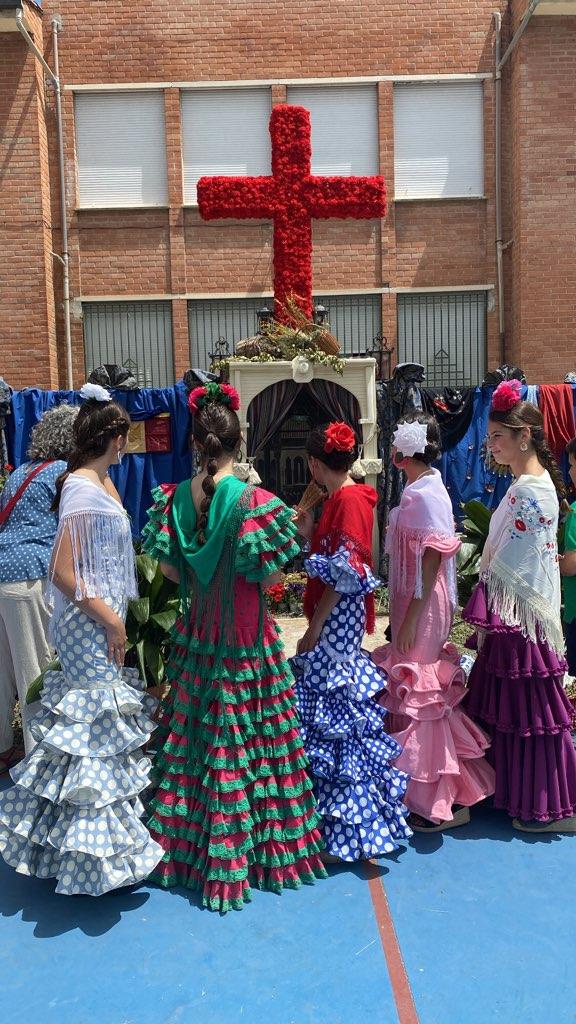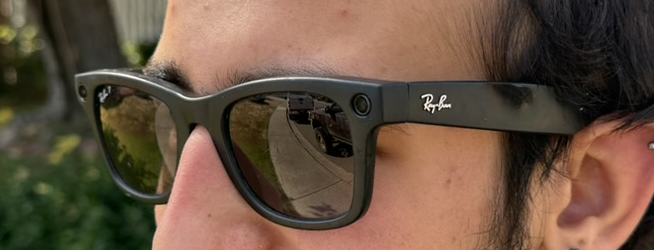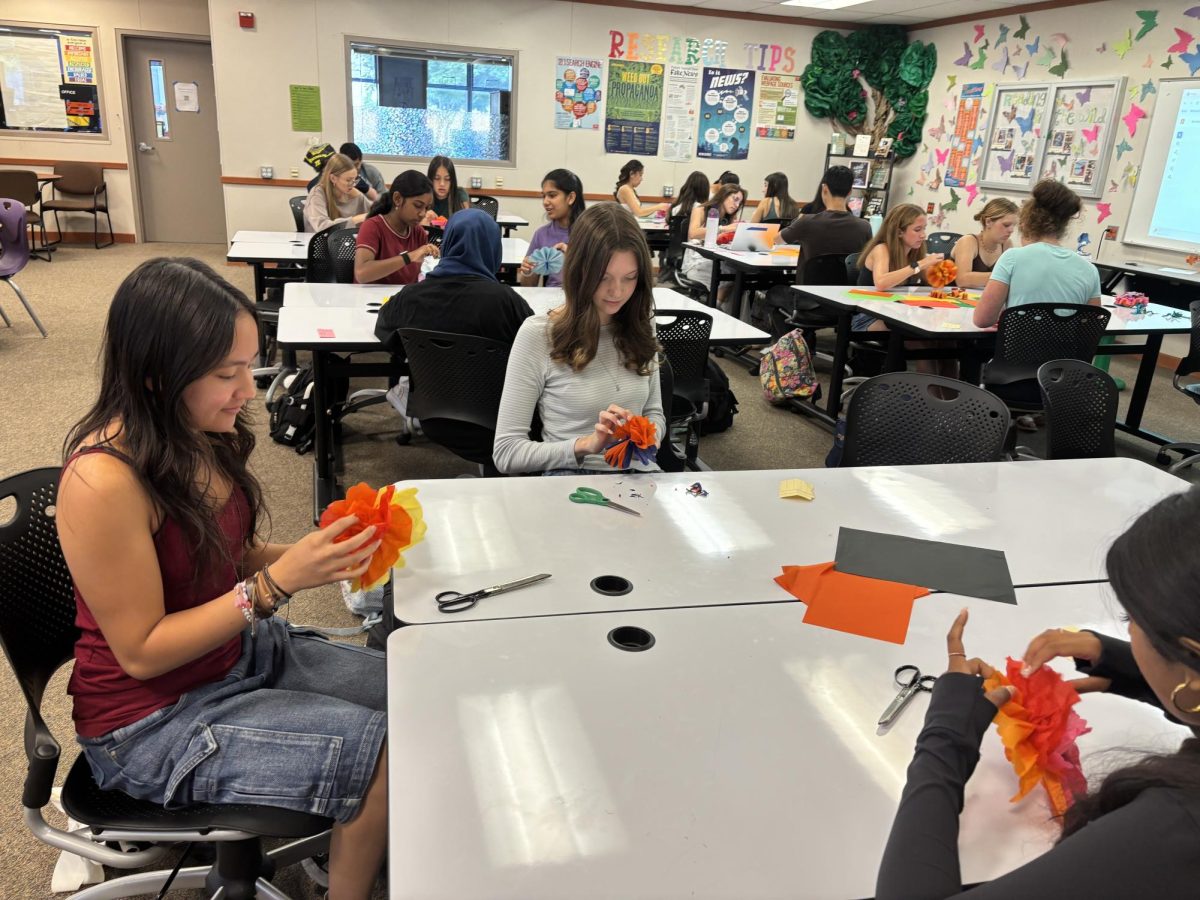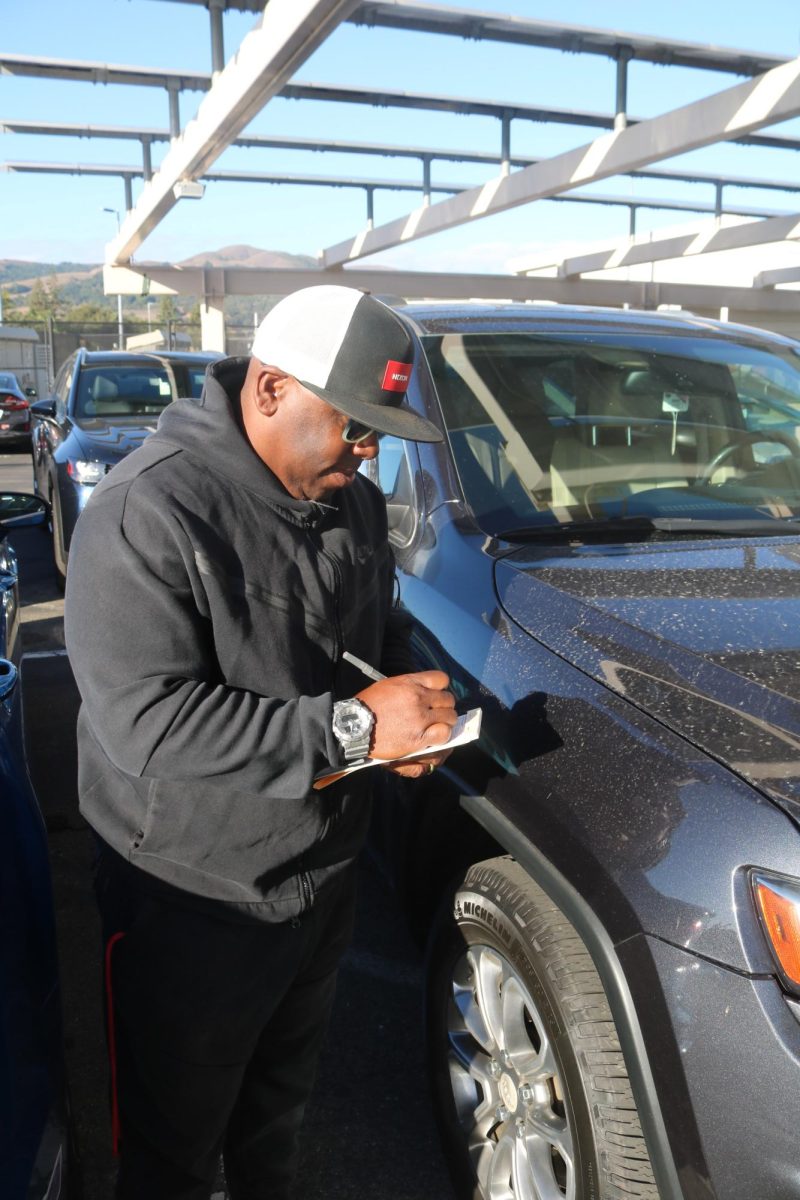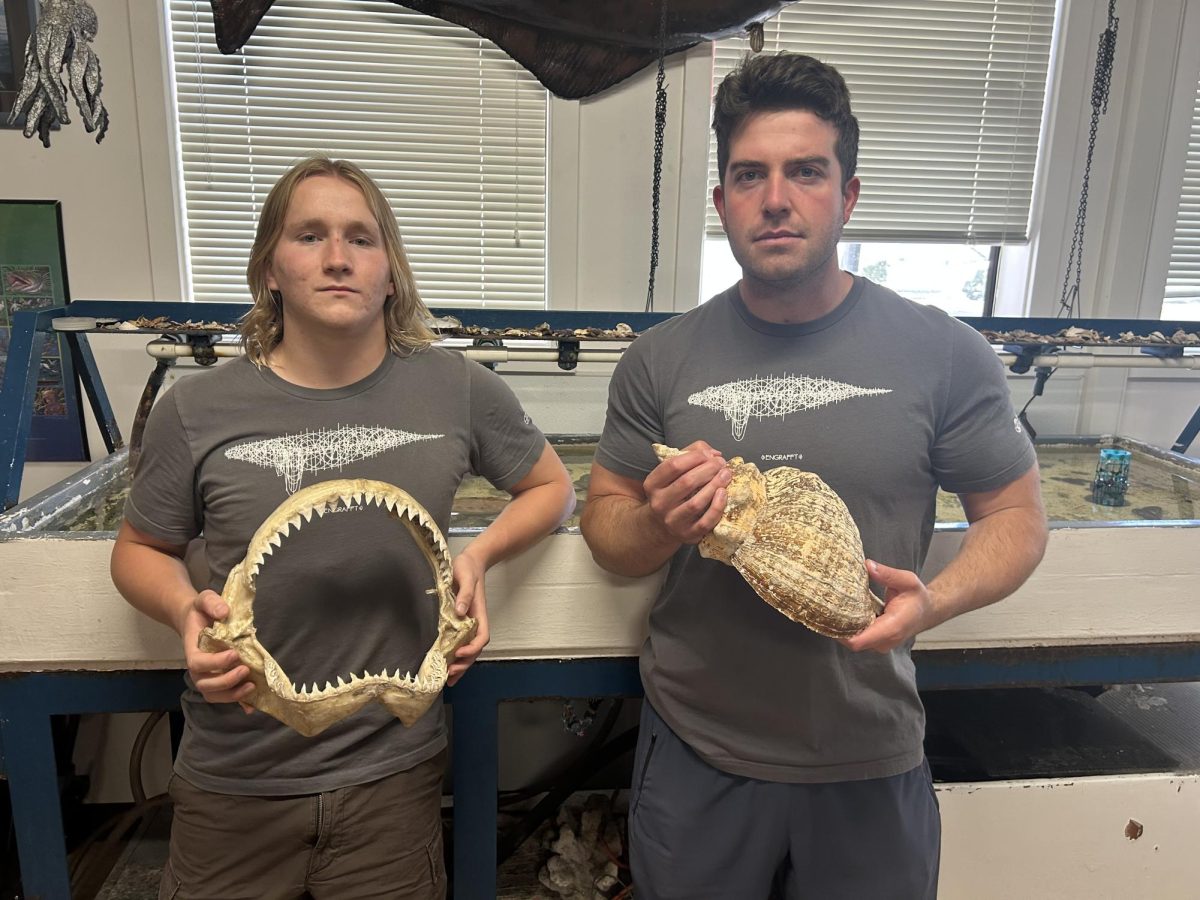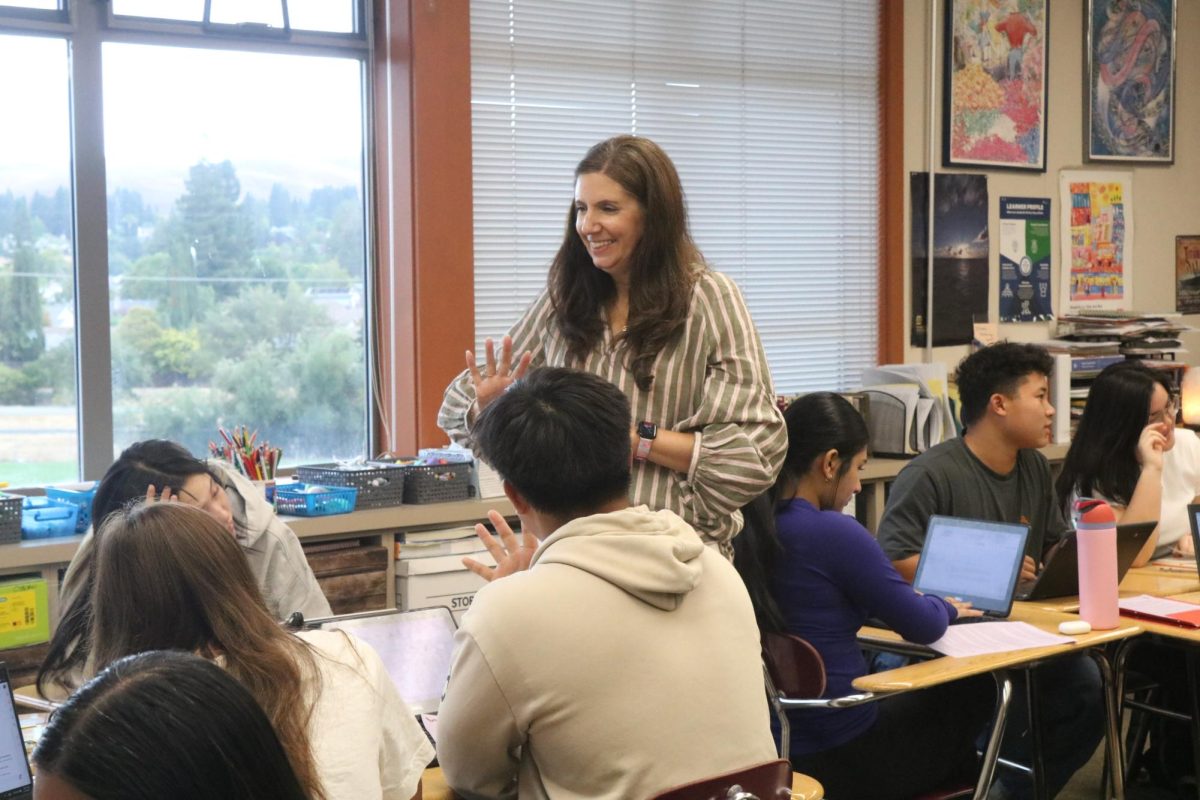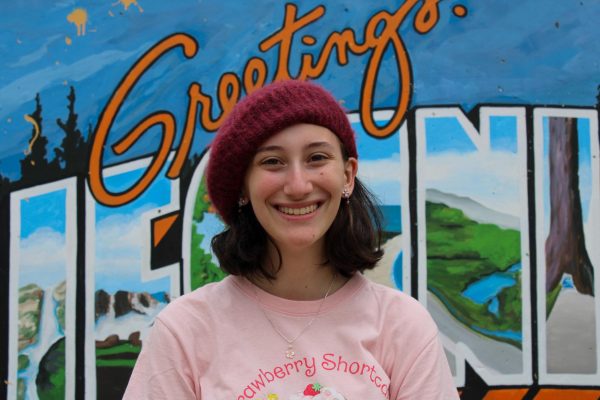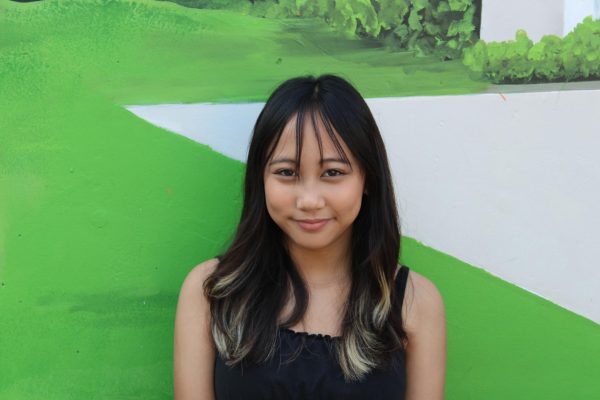Sophomore Manuela Galvez Molina transferred to Cal High from Spain this school year and is the only foreign exchange student among nearly 3,000 of Cal’s student body.
“I’m excited about living the American experience,” Galvez Molina said. “Like this school, the sports are so different here.”
Galvez Molina comes from the community of Andalusia in Granada, Spain. She is staying in San Ramon until June of this school year.
Galvez Molina was inspired to become a foreign exchange student by her father who was a foreign exchange student in the US with his brothers when he was younger.
Her dad frequently mentioned that Galvez Molina should also become a foreign exchange student.
Though she didn’t like the thought of being away from family, she eventually chose to follow in her father’s footsteps.
Galvez Molina said there are many differences between Cal and her school in Spain.
One difference is the number of students. Her old school has grades K-12 and she was with the same 13 classmates throughout each school year. In contrast, Cal has only four grades, with many more students within each grade.
“This is a very big school with a lot of classes and buildings,” Galvez Molina said.
She also had to adjust to walking to each of her classes, which she said was another difference since the students stayed in the same classroom in Spain while the teachers switched rooms.
In Spain, everybody attends the same level classes depending on their grade. At Cal, the students can choose whichever classes they want.
“On one hand that provides less choice,” Heidi Ellicott-Pesic, Galvez Molina’s host mom and San Ramon Valley P.T.A. president, said. “On the other hand, I find it particularly fascinating because [students in the Bay Area have] become so intensely competitive with each other.”
Some schools in Spain have uniforms, including a white polo shirt with the school logo, a gray plaid skirt and a navy sweatshirt. Galvez Molina said she actually prefers uniforms because she doesn’t like figuring out what to wear each day. But she does find it cool to have her wardrobe options open.
In terms of language, Galvez Molina studied English her whole life and is fairly comfortable with speaking the language.She said direct conversation is more understandable than group conversations because of the vocabulary and faster-paced talking.
“[Conversations are] more difficult than I thought but it’s not that bad,” Galvez Molina said.
She now lives with her host family consisting of host mom Heidi Ellicott-Pesic, freshman Andrew Ellicott-Pesic, senior Emily Ellicott-Pesic, and their two cats, Snowball and Mia.
Heidi Ellicott-Pesic said her elder daughter, Emily, is working to become a foreign exchange student in Spain.
Through mutual friends, the Ellicot-Pesic family found that Galvez Molina needed a host family in the US and agreed to host Galvez Molina this school year, while Galvez Molina’s family agreed to host Emily Ellicott-Pesic in the spring.
“It’s such a gift to the [foreign exchange] students coming here to be able to have this opportunity to, you know, live in a place where they can experience our culture,” Heidi Ellicott-Pesic said.
Heidi Ellicott-Pesic said her family has always been interested in hosting an exchange student. When Galvez Molina entered their home, she wanted to make her a part of the family.
“To me, [Galvez Molina is] my Spanish daughter,” said Heidi Elicott-Pesic. “I’ve got her for one academic year and I want to give her many wonderful experiences.”
This isn’t the host’s family’s first time hosting a foreign exchange student.
“We have [hosted] before. We’ve had Japanese exchange students through a soccer program,” Andrew Ellicott-Pesic said. “Obviously coming to a new country, it’s pretty scary, but other than that [with Galvez Molina] it’s going pretty smoothly and she’s adjusted well, so it’s been good.”
He said with Galvez Molina in their home, house work is more evenly split and they get together more often for family activities.
Kelly King, Galvez Molina’s Algebra 1 teacher who has taught foreign exchange students in the past, said she tries to make them feel comfortable by clarifying instructions, using translator apps, and trying to pair them with people they already know.
“It seems Manuela is adjusting well to my class,” King said.
To become an exchange student, Galvez Molina contacted the Educational Resource Development Trust program, which is the international agency that placed her in Cal.
The process included a lot of paperwork about her and her life. The host family reviewed the information and chose Galvez Molina to live with them.
“The host family will have to do the application and the whole process of enrollment and everything,” Cal registrar Vinita Battu said.
The application process requires a student’s immunization and birth records. All other documents, including the transcripts, are provided by the host family or an international agency.
But the credits from their transcripts aren’t transcribed onto their Cal transcript.
“The whole course material and structure is different [in foreign countries],” Battu said.
Battu said the United States uses differentiations for subjects such as math, where there are categories like Algebra 1, Geometry, and Algebra 2.
In many foreign countries there is simply just “math.” These differences make foreign transcripts non-transferable onto Cal transcripts.
Battu said the length of a foreign exchange student’s school year at Cal depends on when they arrive and how many credits they want. So, exchange students typically stay shorter years.
So far, Galvez Molina is enjoying her time at Cal and is excited to spend the year here and meet new people.
“I am talking with everyone and [with] a little bit [more] time, I will be more [comfortable] with most people,” Galvez Molina said.

